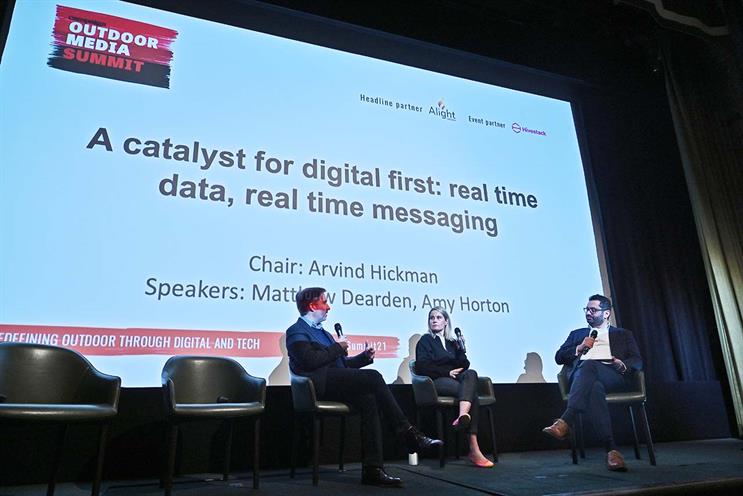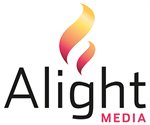
The digital OOH landscape is changing fast but there is still huge untapped potential and there’s a significant way to go before OOH can be considered a digital-first medium.
That’s the verdict of Matthew Dearden, CEO of Alight Media, the fastest-growing out-of-home media owner in the UK, and Amy Horton, chief product officer at Talon Outdoor following their panel discussion at Campaign’s Outdoor Media Summit in London.
“The physical landscape has transformed in the last few years,” explained Dearden. “When we founded Alight in 2018, the top six cities in the UK represented around 90% of digital inventory despite only representing about a sixth of the population.”
Horton reported that, according to SPACE, of 445,000 different OOH panels across the UK only 23,000 are digital. “That’s only 5% of the estate but those panels provide 30% of the impact for audiences,” she added.
1. Think digital
“As media owners we spend a lot of money building big screens in great places,” said Dearden, “but then as an industry, we treat them like really good scrollers.”
Horton agreed, saying: “OOH has on occasion been seen as an afterthought in terms of the creative process. Frustratingly, sometimes we still get what is effectively a press ad as a creative execution for digital when you’ve spent hours planning the intricacies of a digital campaign. Hopefully as we move into a more dynamic, digital landscape we’ll start to see that come to life a bit more. There’s a massive opportunity to take advantage. Engaging with creative agencies is really important.”
Among successful digitised OOH examples, Horton cited the recent government campaigns with very quick turnaround times and multiple messaging. Also McDonald’s where retail links with OOH. “Through dynamic, digital creative, messages in store are being reflected in the digital OOH screens and we’re seeing really effective uplift,” she explained.
2. Beware of the P word
Programmatic is important but it’s not the be all and end all. “We have to be very careful that we don’t cannibalise existing investment in the medium,” said Horton.
“We’re on the cusp of material change,” believes Dearden. “The ultimate test is whether each layer in the value chain adds more value than cost. There's real potential for OOH to do smarter, more targeted campaigns to get close to the plan goal. We can move a couple of steps towards that with programmatic so that should drive growth.”
However, he warned: “There’s a danger with programmatic that we reward the wrong thing. We know as human beings that a good billboard with low clutter and high dwell-time has a different emotional impact to a bad billboard hidden down a side road even if the audience is the same.”
3. Smart tech, not all tech
“We go pure tech at our peril,” said Dearden. “Expertise and value-add matters – the ability to be dynamic and flexible in our creative at scale really matters.” But Dearden did describe as a “game changer” the ability for advertisers to use audience ‘triggers’ (like the weather or time of day) in an “automated playlist rather than fixed loop”.
4. Better targeting
“We’ve seen that adding behavioural data targeting to campaigns can drive outcomes and we've seen uplift of on average 30%,” said Horton. Dearden argued that the UK has led the world in digitisation but that it is not a world leader in the exploitation of digital data rich buying.
5. Invest in digital tools
Horton believes that “automating the transactional journey and doing it across the entire market will really shift the dial.” For Dearden, this requires investment “in digital tools at scale”. He added: “We all compete with each other as media owners or as agencies but we've got a collective interest in serving the client better by being able to be smart at scale.”
6. Lessons from other media
Horton is concerned about dumbing down and OOH being viewed as a “commodity medium”. She added: “People feel a personal affinity to OOH as part of the local community or the iconic impact that we can offer.”
Dearden does see “positive examples from other media”, whether that’s online or addressable TV. But he insisted: “We should be unabashed about charging a large premium if there’s a large value-add. As long as the premium is less than the value-add then I think everyone can tolerate that.”
7. The shift to CPM
The move towards CPM from panel-based buying has been, according to Horton, “generally well received by clients” because the cost is based on “what they’re actually worth from an audience perspective, rather than perceived value”. Dearden agreed, saying: “We’re big fans of CPM conceptually because you’re moving closer to what the client wants and reducing inefficiency in the market. But there will always be a role for location-based buying.”



